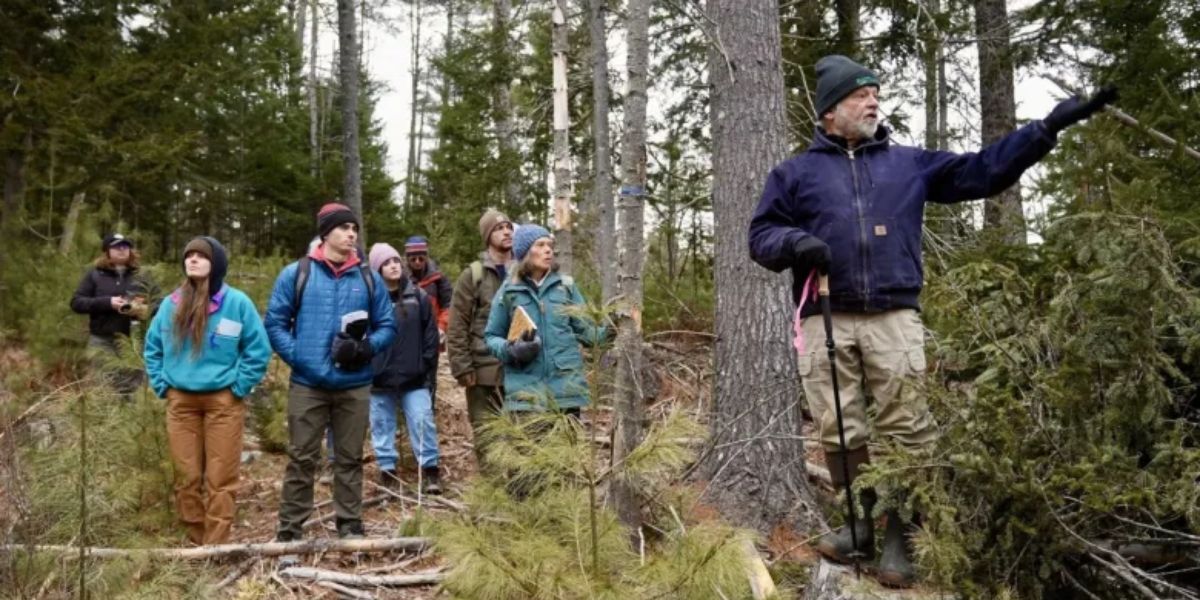Last week, Governor Janet Mills signed a law requiring landowners involved in the forest carbon credit market to submit basic data to the state annually.
This information will be used to build a database and monitor the effects of carbon credits on Maine’s forests. The data includes the landowner’s name, contact details, enrollment date, and total enrolled acreage.
“We need to understand how Maine woodland owners are participating in the emerging forest carbon market, given both Maine’s forest-based economy and its climate change initiatives,” stated Morten Moesswilde, the division director of Forest Policy and Management for the Department of Agriculture, Conservation and Forestry, during a February work session on the legislation.
Although part of this data is tracked by national and international registries, Moesswilde stated that the information is hard to search and offered in different forms and with different levels of detail, with project details hidden “deep in supporting documents.”
According to Moesswilde, Maine would follow New Hampshire as the second state in the nation to adopt such a tracking system.
Conservation groups, the Maine Forest Products Council, and a number of woodlot owners backed the law, emphasizing the value of comprehending a new market.
“I am worried that large companies may come to Maine and buy huge blocks of carbon credits and seriously reduce our timber harvests,” James Robbins, former owner of Robbins Lumber Inc., stated in testimony. “We need to know what is going on.”
The forest carbon credit market has been criticized by several for giving big businesses “a license to pollute” while claiming to be carbon neutral and “looking[ing] good to the public and their shareholders.” Robbins also raised this concern.
Despite its flaws, proponents of the market claim that it offers a means of rewarding landowners who engage in sustainable forest management and preserving forests as forests.
“There may be cases where carbon projects produce a modest climate benefit or less dramatic climate benefit than some would hope,” Mark Berry, Maine’s forest program director for The Nature Conservancy, stated in 2022. “But if they helped to keep forests on the landscape, they’re still doing some good.”
The main strategy used by officials to reach net-zero emissions by 2045 is to count our trees as carbon sinks. According to the Maine Department of Environmental Protection, sequestration in the environment, or absorption by wetlands and woods, accounted for 91% of the state’s gross greenhouse gas emissions in 2021.
Critics point out that carbon credits traded into the market are included in that number. Should Maine consider those woods as offsetting carbon emissions here if they are already being counted as offsets by another state or business?
Read Also: Trump Burger Chain Gains Traction in Texas Amid Mixed Reactions
According to a 2023 assessment, working woods in northern Maine may be managed to store at least 20% more carbon without lowering the amount of timber produced. However, private landowners, who own practically all of the state’s forested property, will need to support that.
Thus far, landowners in Maine have shown reluctance to engage in the forest carbon market. Despite a market that has existed for decades, only 3.5% of the state’s major landowners have reached agreements to sell their carbon, according to a 2022 report by The Monitor.
Small woodlot owners have also been hesitant to join, claiming that the payments are insufficient to cover the expenses of meeting strict requirements.
“The real benefit will be a trend line over time,” he stated.








